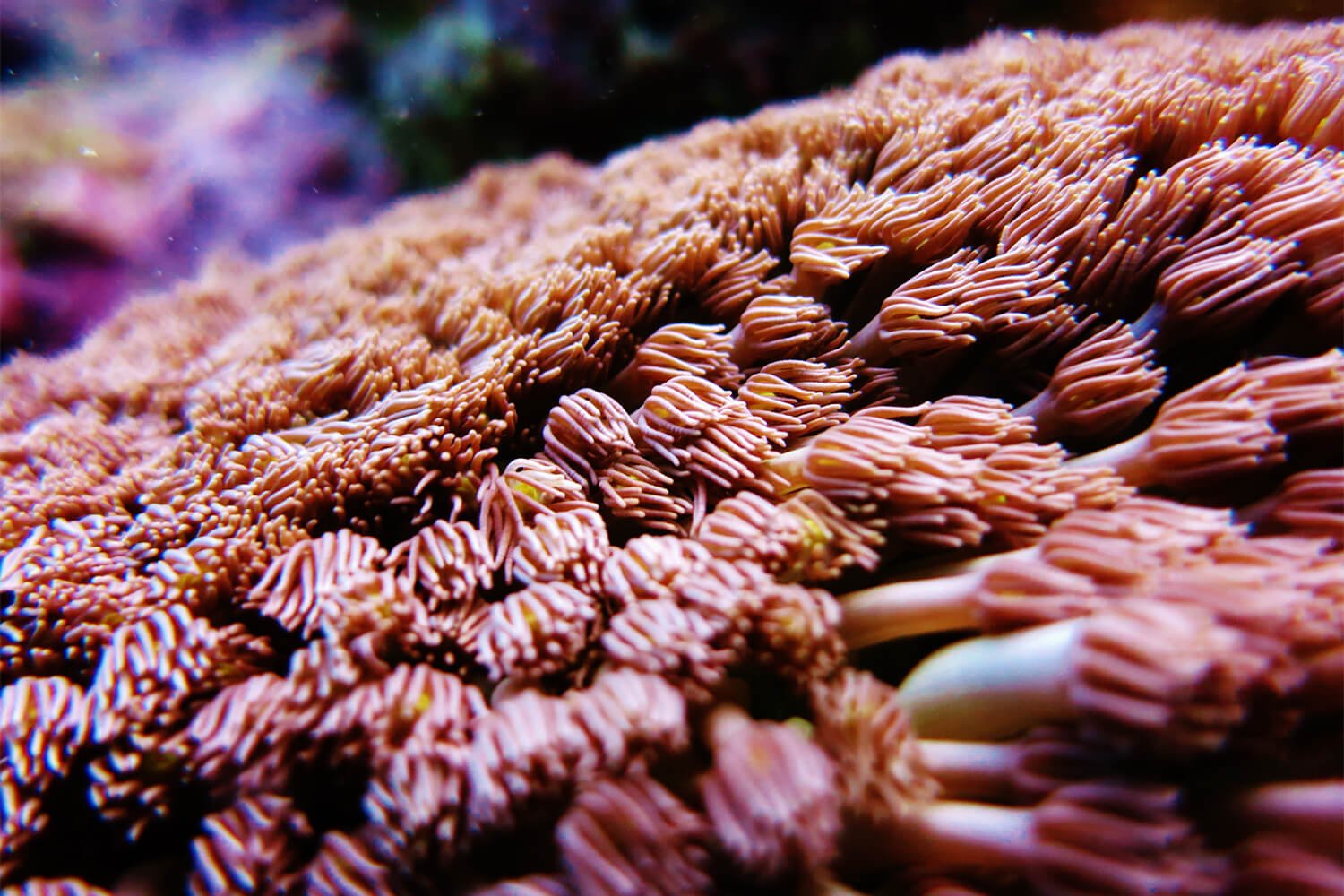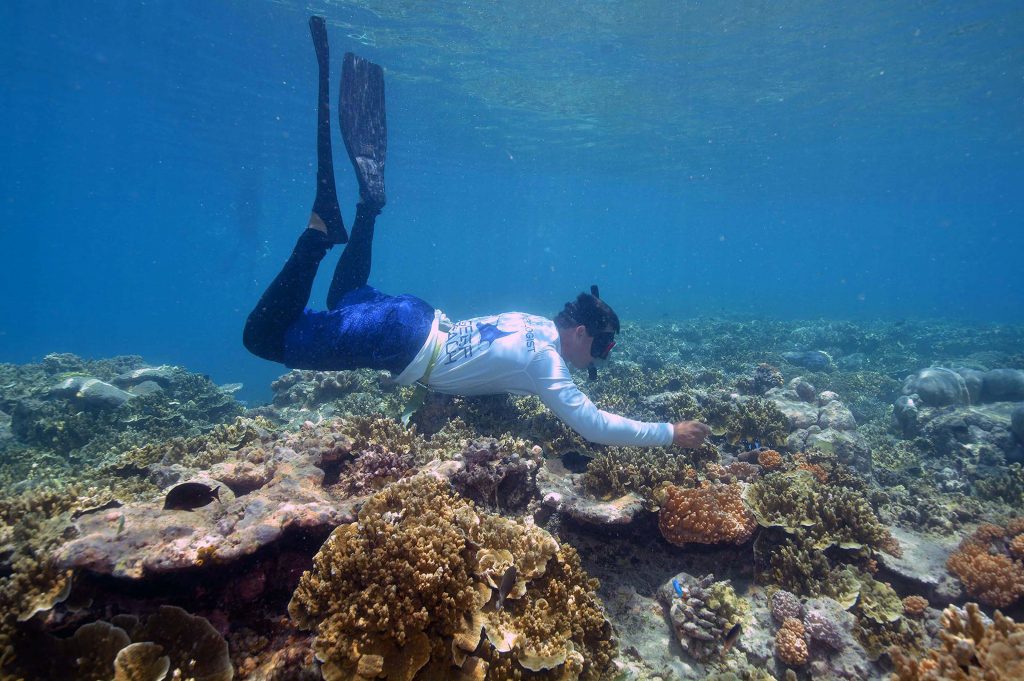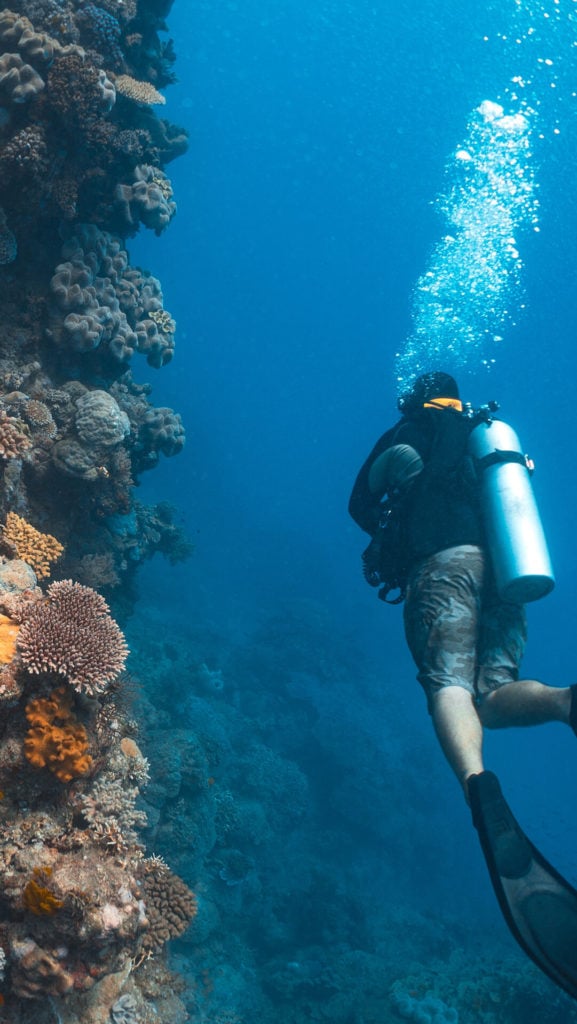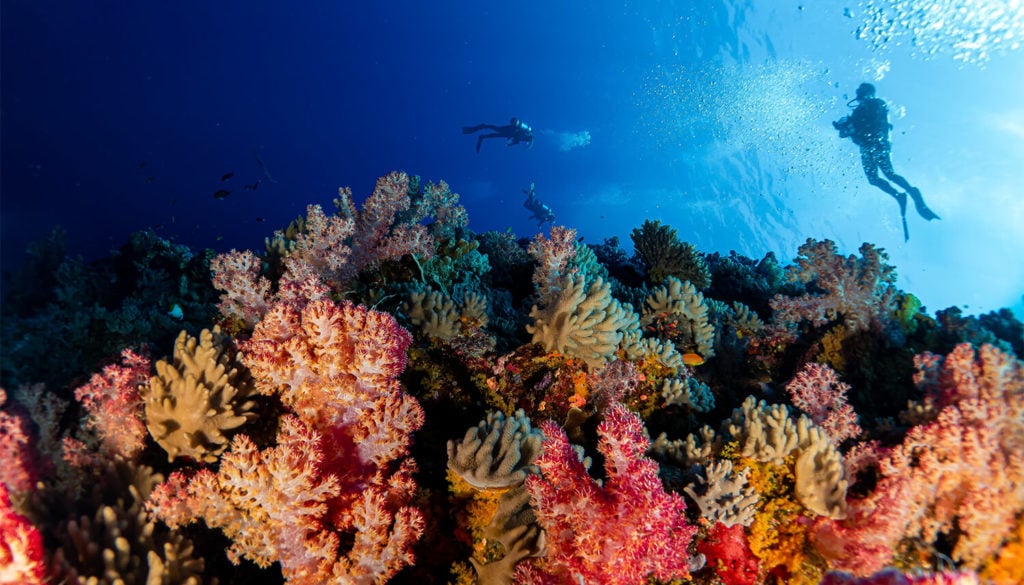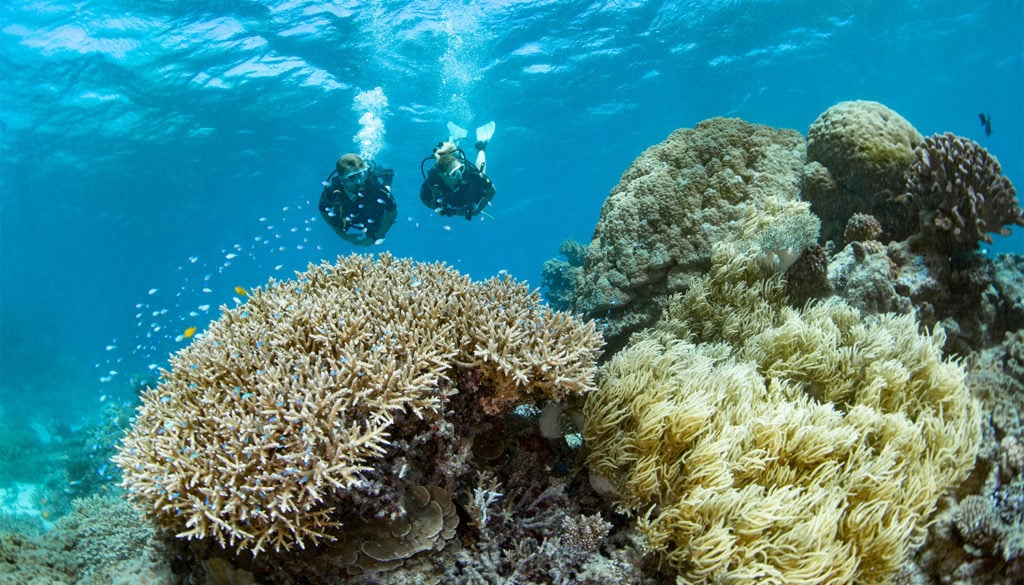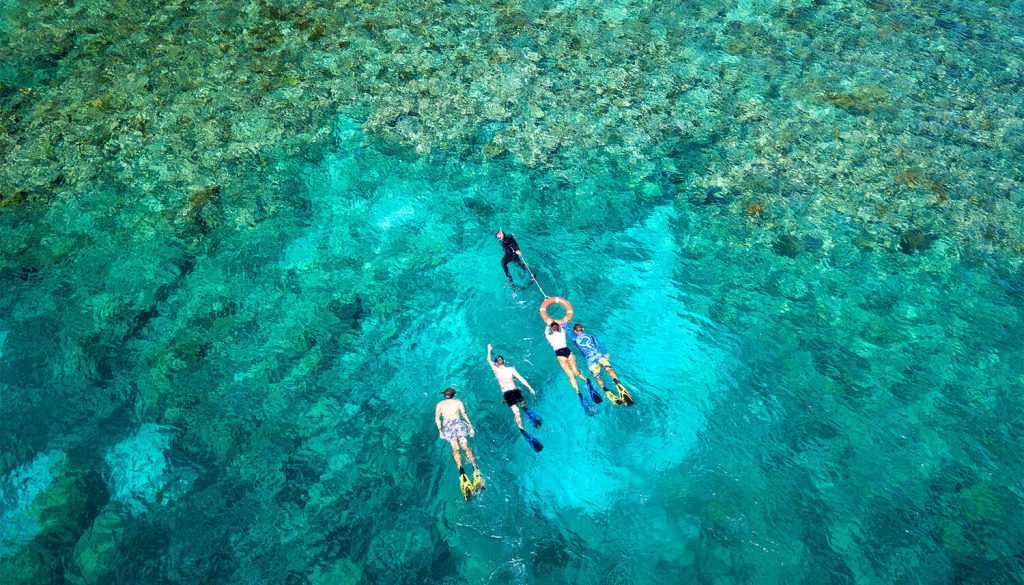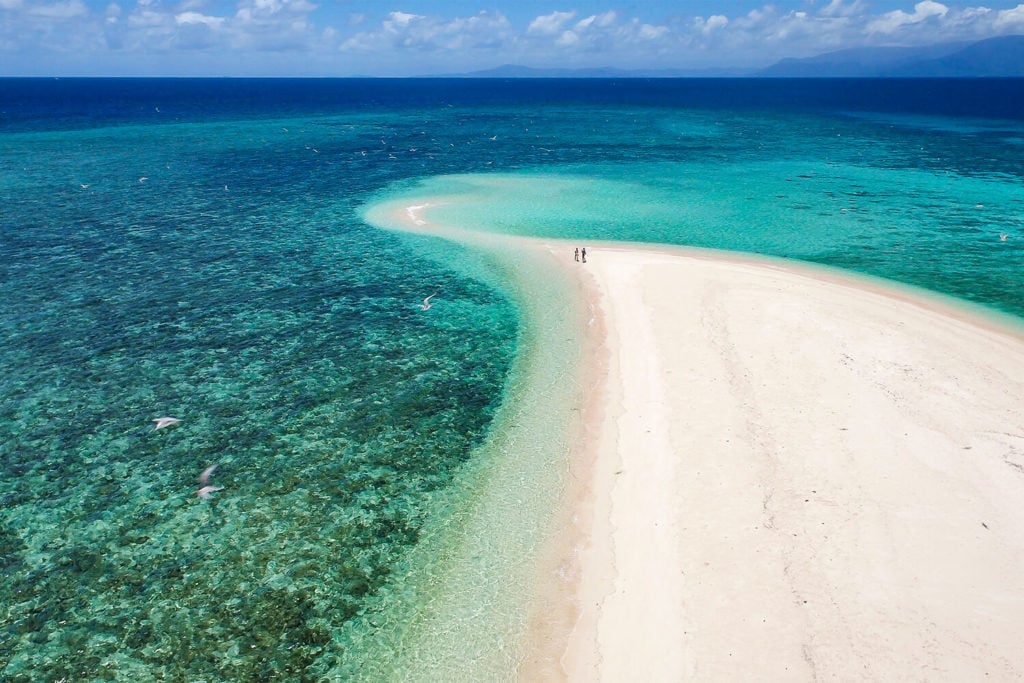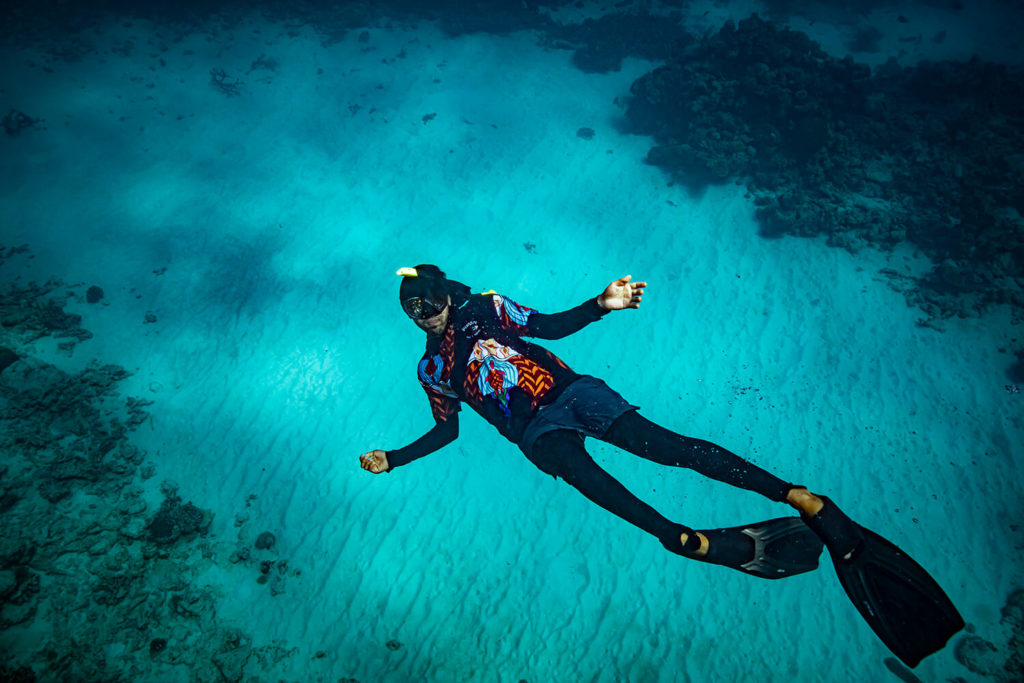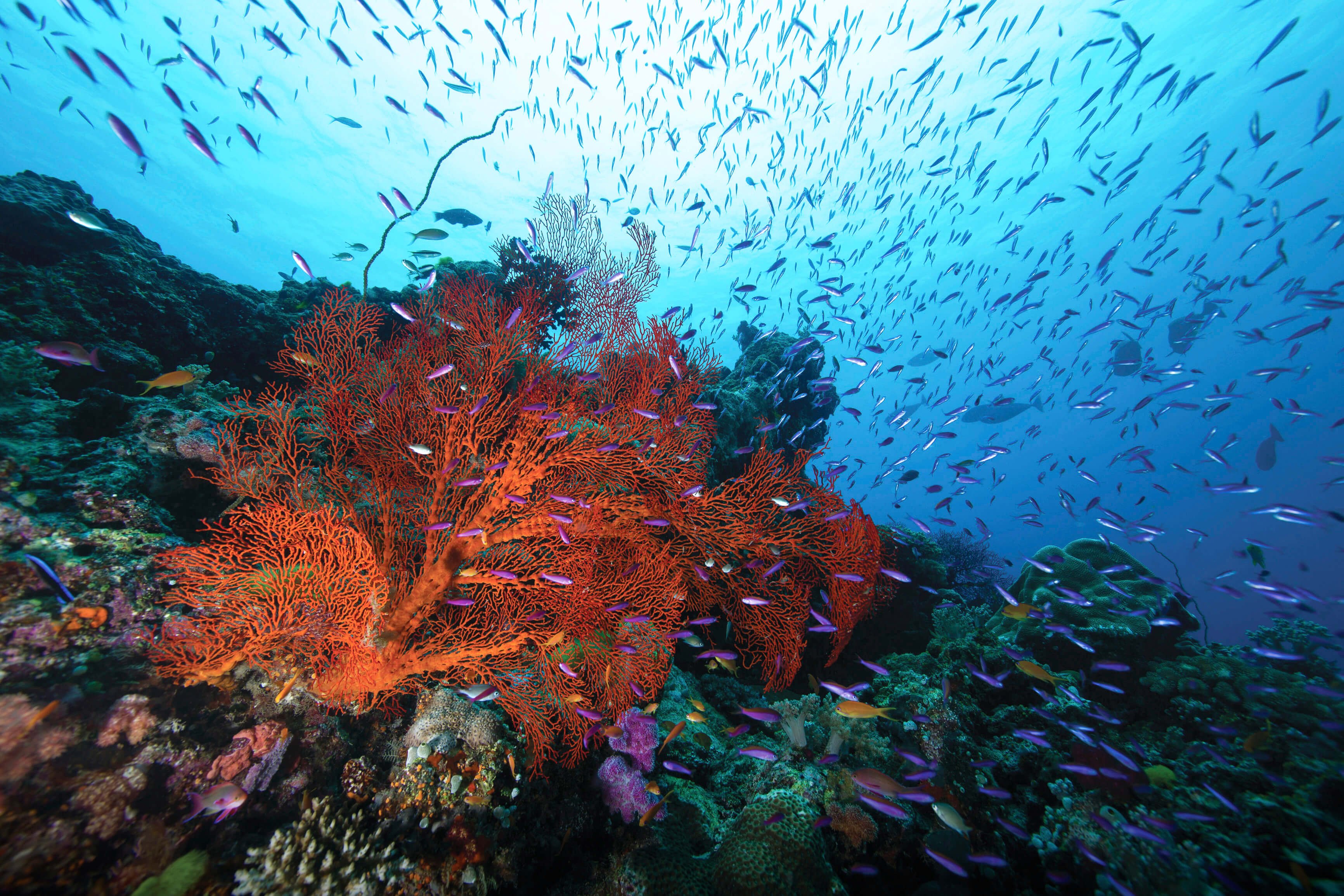TNQ Writer
To help understand more about coral bleaching and what’s really happening to the World Heritage-listed wonder, Gareth Phillips, Master Reef Guide, Marine Biologist and Director of Marine Discoveries, sat down to explain its impacts, causes and what you can do about it.
Surviving or thriving, what really is the health of the Great Barrier Reef?
You’re not alone if you feel like you’re swimming in the wild, open sea when it comes to information about coral bleaching.
The issue is incredibly complex on the Great Barrier Reef and has become highly publicised by the media, resulting in a slew of headlines that don’t always depict what’s going on below the water’s surface.
Marine Biologist and Master Reef Guide, Gareth Phillips, prefixes this interview by saying that the most significant threat to the Great Barrier Reef and all coral reefs globally is climate change. Mass Bleaching events are a very serious concern and should not be taken lightly. However, the Great Barrier Reef’s health story is a very complex one with many nuances. One of Gareth’s biggest hopes is to provide people with the best information so they are inspired to look after the natural world, including the Great Barrier Reef.
Read on, because this article is a message of hope. Coral bleaching does exist, but the world’s best managed reef is doing lots about it … and you can too.
What is coral bleaching?
First things first, the most misunderstood element of the coral bleaching phenomenon is its very definition. In modern media, the terms coral bleaching and mass bleaching are often confused with one another. As Gareth explains, when we talk about coral bleaching (not mass bleaching), what we are talking about is a physiological response by coral to stress.
In the event of stress, corals bleach to protect themselves from the stress, similar to humans getting a fever when they get the flu. This process allows the coral colony to survive. Each summer, this type of small isolate bleaching ordinarily occurs, and often goes unnoticed by the untrained eye, and is no cause for concern.
As Gareth notes, when you hear marine scientists say that coral bleaching is natural, this type of bleaching (not mass bleaching) is what they are talking about. Many things cause coral bleach, on the Great Barrier Reef, the two main stressors are water temperature change (both in the hot and cold direction) and UV. However, through human-driven climate change we are seeing these stressors being large and more widespread resulting in mass bleaching.
What happens when coral is bleached?
To answer this question, Gareth starts with a coral anatomy lesson. In simple terms, each piece of coral we see are colonies of hundreds if not thousands of jellyfish-like animals (coral polyps) which are usually colourless. What gives coral their colour is the algae/plant which symbiotically lives within them, and it’s this plant that’s responsible for giving 95% of the coral’s colour (and in fact, their energy).
This is important because when you have one of the stress events listed above, the algae gives off toxins, rather than food, which stress the coral animal. A stressed coral then evicts the algae and the coral loses its colour, often giving the coral a white appearance … but not always (more on that later!). Just as if you had a cold or flu you might exhibit symptoms like a sniffly nose to show your body is fighting off an illness with its immune system, coral bleaching is the same kind of visible symptom.
What does bleached coral look like?
Sure, some bleached coral may look white, but just as no two corals look the same, neither do coral bleaching events. One of the reasons coral bleaching is so misunderstood is there are different types of bleaching, which look totally different, but are technically classed as ‘bleaching events’: And even within the different types there are different grades too (Gareth told you it was complex!).
- Spot bleaching
- Paling
- Part bleaching
- Fluorescent bleaching
- Complete bleaching
Consider this – if one piece of coral is made up of tens of thousands of tiny coral polyps and spot bleaching occurs, only affecting ten polyps, technically speaking coral bleaching has occurred. To the regular scuba-masked naked eye, would you even notice this? Probably not. However, when the media reports wide-spread coral bleaching do they accompany the story with pictures of spot bleaching or complete bleaching? You only need to look to the headlines to find the answer.
Is bleached coral dead coral?
One thing marine biologists are clear about is that bleached corals are not dead. A better way of describing bleached corals is that they are ‘in protection mode’. Here’s where things get complex again. When we’re talking about coral mortality, mortality doesn’t always mean an entire coral colony – recorded coral mortality rates include sections / polyps of coral, which is why the reef might seem less healthy than it currently is. Outside of mass bleaching, in a bleaching event, coral is simply undergoing a natural response to threats and their bleaching is their version of an “immune system fighting for their recovery”.
Does bleached coral recover?
In most bleaching occurrences, bleached coral will recover. In mass bleaching events mortality is more common, purely because the stressor impact lasts for longer. However scientists are still studying what this means for coral’s future. Studies show that bleached corals that have recovered, and depending on the level and type of beaching can grow slower, more susceptible to diseases and are less productive in reproduction cycles.
While this is cause for concern, Gareth is clear that:
There is an urgency for the health of the reef but it’s not a hopeless urgency.
What does bleached coral mean for the health of the reef?
The difference and impact of coral bleaching opposed to mass bleaching on the health of the reef is significant, and yet frequently reported as the same. There is no denying that the three mass bleaching events on the Great Barrier Reef have had a negative impact on the Great Barrier Reef, and more needs to be done globally to mitigate climate change.
However, Gareth encourages people to read beyond the headlines to get a clear picture of the health of the reef, so as to remain inspired, hopeful and driven to play a role in protecting the Great Barrier Reef. While there are no positives in the short or long term for the reef’s health when it comes to mass coral bleaching, it is well recognised that normal bleaching is a sign that the reef’s ecological functions are still intact.
Should I stop coming to the reef to prevent coral bleaching?
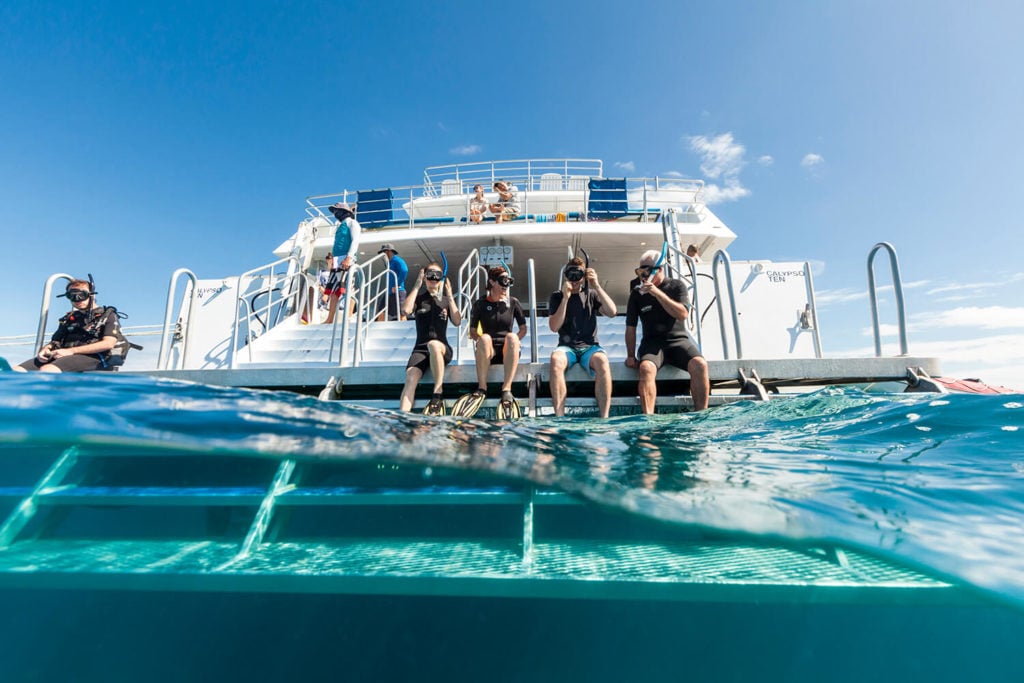
Visiting the reef supports reef management
One thing that’s not in question is that there’s no correlation between visiting or viewing the reef and coral bleaching.
According to Gareth, the message is simple:
Everyone should come and visit the reef.
When you’re engaging with the reef and understanding it, you can understand its importance, challenges and opportunities and you can create a social and moral connection with it.
What’s more, visiting the reef supports reef management from all levels of government. All visitors to the reef pay an environmental management charge that generates up to $13 million a year, which goes towards reef management, protection and research. Not to mention that every tourist plays a role in ensuring tourism companies can continue with their reef protection efforts, such as showcasing the reef, monitoring reef health, reporting and helping with research and reef resilience-building activities.
Just as the corals and their algae have a symbiotic relationship, there is a reef community of marine tourism, scientist, government, traditional owners, other reef users and the broader community that all act in a symbiotic relationship to look after the Great Barrier Reef.
If you want to be part of that community and help the Great Barrier Reef, start planning your next Great Barrier Reef trip, hop over here.
How can I help?
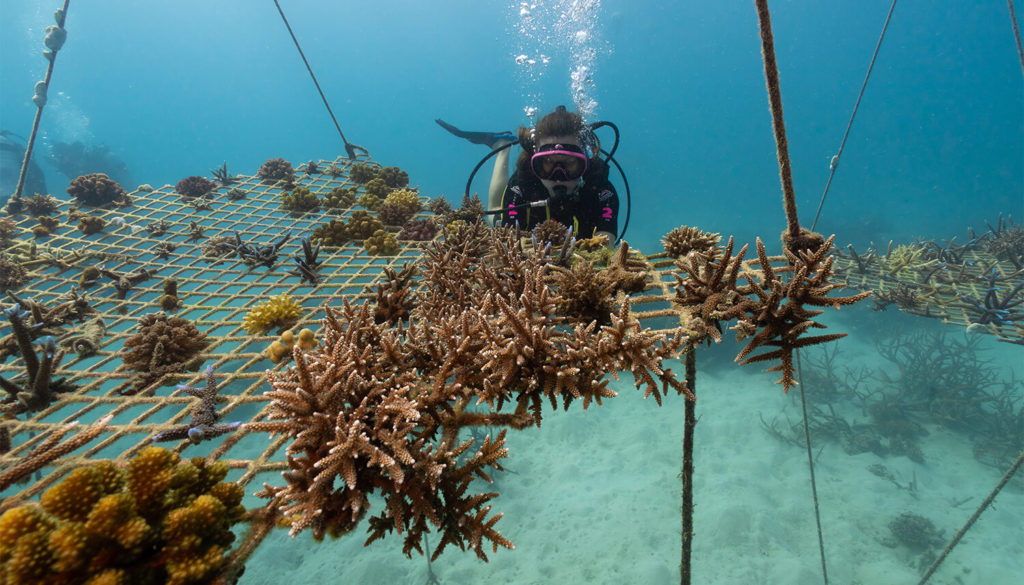
Coral nursery on the Great Barrier Reef
No matter where you are in the world, there are plenty of ways you can support the Great Barrier Reef. The biggest threat to the Great Barrier Reef is human-driven climate change and mass consumption. Small changes can make a big difference and just as millions of tiny, microscopic coral polyps can form an icon so large it can be seen from space, so too can small changes in consumption and behavioural shifts at home too.
Gareth suggests that you should “start by reducing your consumption, by eliminating one thing per month. Over the course of a year, you’ll have reduced your consumption 12-fold.” Remember it’s small things that lead to big environmental change.
For more myth-busting about coral bleaching, the Great Barrier Reef Marine Park Authority has answers over here.

